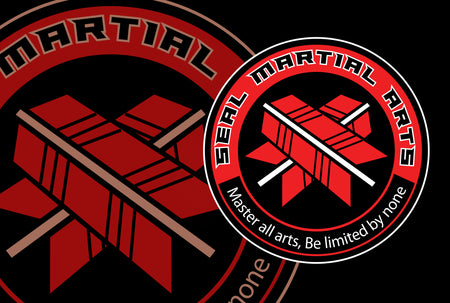
Nine Conventional Blade Geometries of Nihontō Swords
Nihontō, the traditional Japanese sword, carries within its steel the essence of centuries of craftsmanship, culture, and martial prowess. Beyond its functional utility, the Nihontō embodies an art form where each curve, each edge, and each fold of its blade tells a story of skill and tradition. Central to this artistry are the nine conventional blade geometries, each with its own distinct characteristics and historical significance.
Maru: Characterized by a simple, rounded cross section, the Maru geometry is known for its durability and ease of manufacturing. Swords with Maru geometry possess a single type of steel throughout the blade, making them robust and suitable for heavy cutting tasks.
Kobuse: In contrast to Maru, Kobuse blades feature a softer iron core enveloped by a harder steel jacket. This construction provides flexibility and resilience, making Kobuse swords ideal for absorbing impacts during combat while retaining sharpness.
Honsanmai: Honsanmai blades exhibit a three layer construction consisting of a hard steel core sandwiched between two layers of softer iron. This geometry combines the cutting ability of hard steel with the flexibility and shock absorption of iron, resulting in versatile swords prized by warriors and collectors alike.
Shihozume: Shihozume, or four sided geometry, refers to blades with a quadrilateral cross section. This unique shape enhances cutting performance by concentrating force along the edges while reducing drag, allowing for swift and precise strikes.
Makuri: Makuri blades feature a subtle curvature along their length, giving them a graceful and aerodynamic profile. This curvature not only enhances the sword's aesthetic appeal but also improves its handling and maneuverability in combat.
Wariha Tetsu: Wariha Tetsu swords are distinguished by their pattern welded construction, where multiple layers of steel are forge welded together and then twisted or folded to create intricate patterns. This geometry results in visually striking blades with enhanced strength and resilience.
Orikaeshi Sanmai: Orikaeshi Sanmai blades boast a unique three layer construction that is folded and forged multiple times to create a wave like pattern along the blade's surface. This geometry not only enhances the sword's aesthetic beauty but also improves its structural integrity and cutting performance.
Gomai: Gomai blades feature a five layer construction consisting of alternating layers of hard and soft steel. This complex geometry results in swords with exceptional cutting ability and durability, making them highly prized by discerning collectors and martial artists.
Soshu Kitae: Soshu Kitae represents the pinnacle of Japanese swordsmithing, characterised by its intricate and labor intensive construction. Blades crafted using Soshu Kitae technique incorporate multiple types of steel, meticulously layered and forged to create exquisite patterns reminiscent of flowing water or wood grain.
The nine conventional blade geometries of Nihontō swords embody the rich heritage and unparalleled craftsmanship of Japanese swordsmithing. Each geometry reflects centuries of innovation, tradition, and mastery, ensuring that the legacy of the samurai lives on in these timeless works of art. Whether as weapons of war, symbols of status, or objects of beauty, Nihontō swords continue to captivate and inspire admirers around the world with their timeless allure and unparalleled craftsmanship.
Maru: Characterized by a simple, rounded cross section, the Maru geometry is known for its durability and ease of manufacturing. Swords with Maru geometry possess a single type of steel throughout the blade, making them robust and suitable for heavy cutting tasks.
Kobuse: In contrast to Maru, Kobuse blades feature a softer iron core enveloped by a harder steel jacket. This construction provides flexibility and resilience, making Kobuse swords ideal for absorbing impacts during combat while retaining sharpness.
Honsanmai: Honsanmai blades exhibit a three layer construction consisting of a hard steel core sandwiched between two layers of softer iron. This geometry combines the cutting ability of hard steel with the flexibility and shock absorption of iron, resulting in versatile swords prized by warriors and collectors alike.
Shihozume: Shihozume, or four sided geometry, refers to blades with a quadrilateral cross section. This unique shape enhances cutting performance by concentrating force along the edges while reducing drag, allowing for swift and precise strikes.
Makuri: Makuri blades feature a subtle curvature along their length, giving them a graceful and aerodynamic profile. This curvature not only enhances the sword's aesthetic appeal but also improves its handling and maneuverability in combat.
Wariha Tetsu: Wariha Tetsu swords are distinguished by their pattern welded construction, where multiple layers of steel are forge welded together and then twisted or folded to create intricate patterns. This geometry results in visually striking blades with enhanced strength and resilience.
Orikaeshi Sanmai: Orikaeshi Sanmai blades boast a unique three layer construction that is folded and forged multiple times to create a wave like pattern along the blade's surface. This geometry not only enhances the sword's aesthetic beauty but also improves its structural integrity and cutting performance.
Gomai: Gomai blades feature a five layer construction consisting of alternating layers of hard and soft steel. This complex geometry results in swords with exceptional cutting ability and durability, making them highly prized by discerning collectors and martial artists.
Soshu Kitae: Soshu Kitae represents the pinnacle of Japanese swordsmithing, characterised by its intricate and labor intensive construction. Blades crafted using Soshu Kitae technique incorporate multiple types of steel, meticulously layered and forged to create exquisite patterns reminiscent of flowing water or wood grain.
The nine conventional blade geometries of Nihontō swords embody the rich heritage and unparalleled craftsmanship of Japanese swordsmithing. Each geometry reflects centuries of innovation, tradition, and mastery, ensuring that the legacy of the samurai lives on in these timeless works of art. Whether as weapons of war, symbols of status, or objects of beauty, Nihontō swords continue to captivate and inspire admirers around the world with their timeless allure and unparalleled craftsmanship.
